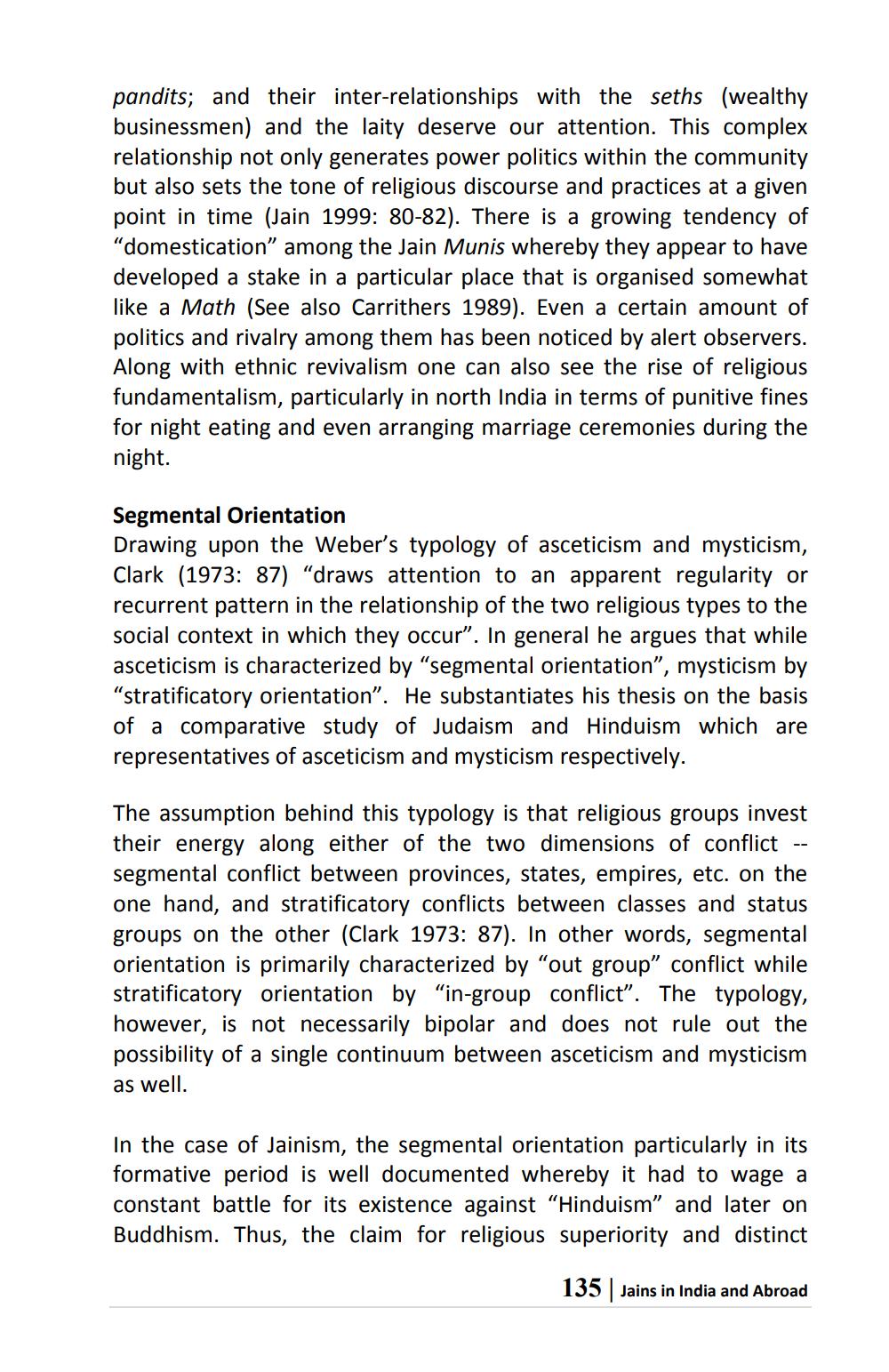________________
pandits; and their inter-relationships with the seths (wealthy businessmen) and the laity deserve our attention. This complex relationship not only generates power politics within the community but also sets the tone of religious discourse and practices at a given point in time (Jain 1999: 80-82). There is a growing tendency of "domestication" among the Jain Munis whereby they appear to have developed a stake in a particular place that is organised somewhat like a Math (See also Carrithers 1989). Even a certain amount of politics and rivalry among them has been noticed by alert observers. Along with ethnic revivalism one can also see the rise of religious fundamentalism, particularly in north India in terms of punitive fines for night eating and even arranging marriage ceremonies during the night.
Segmental Orientation Drawing upon the Weber's typology of asceticism and mysticism, Clark (1973: 87) "draws attention to an apparent regularity or recurrent pattern in the relationship of the two religious types to the social context in which they occur”. In general he argues that while asceticism is characterized by “segmental orientation”, mysticism by "stratificatory orientation”. He substantiates his thesis on the basis of a comparative study of Judaism and Hinduism which are representatives of asceticism and mysticism respectively.
The assumption behind this typology is that religious groups invest their energy along either of the two dimensions of conflict -- segmental conflict between provinces, states, empires, etc. on the one hand, and stratificatory conflicts between classes and status groups on the other (Clark 1973: 87). In other words, segmental orientation is primarily characterized by "out group” conflict while stratificatory orientation by "in-group conflict". The typology, however, is not necessarily bipolar and does not rule out the possibility of a single continuum between asceticism and mysticism as well.
In the case of Jainism, the segmental orientation particularly in its formative period is well documented whereby it had to wage a constant battle for its existence against “Hinduism” and later on Buddhism. Thus, the claim for religious superiority and distinct
135
Jains in India and Abroad




